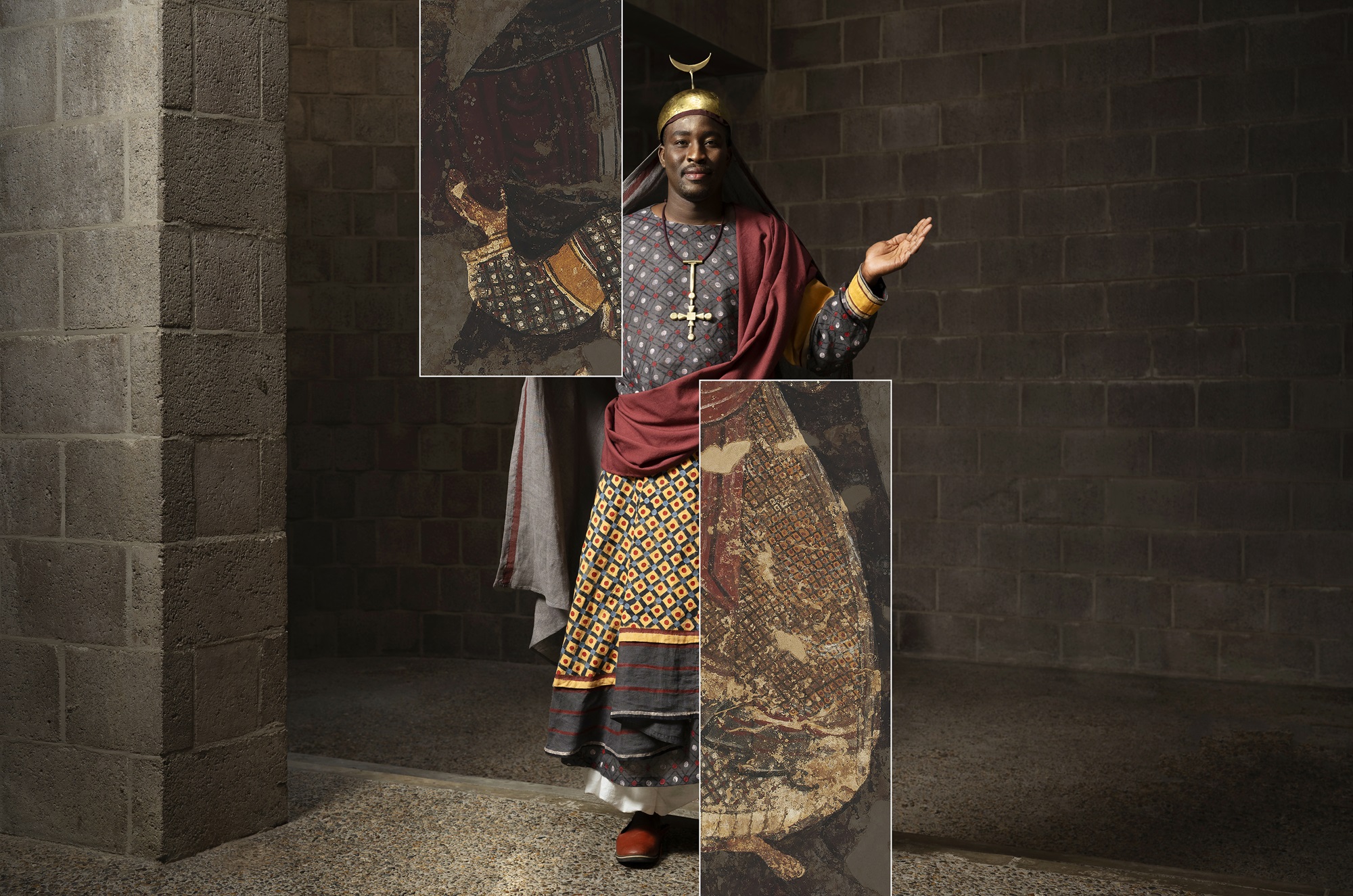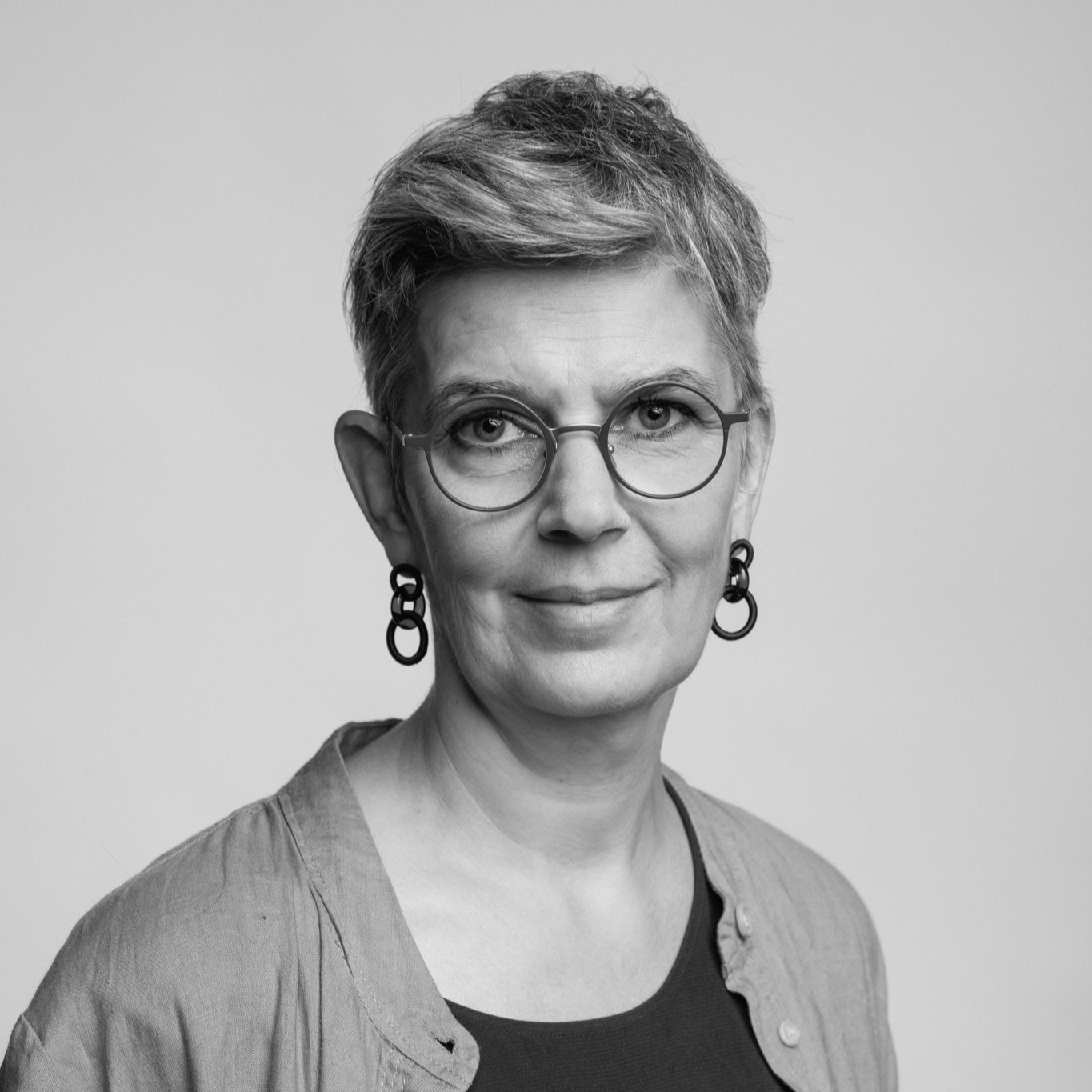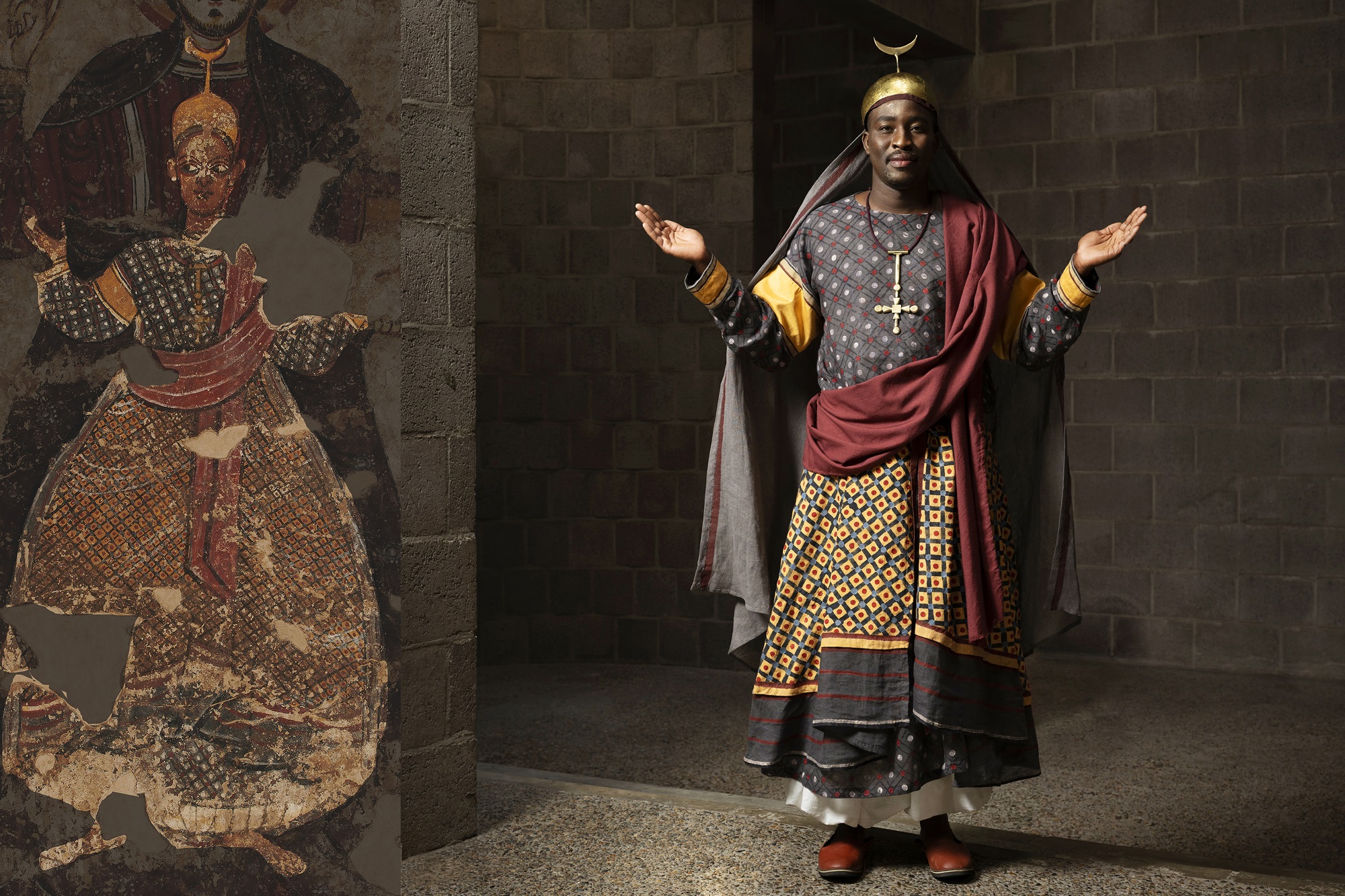Published: 8 October 2024
Reconstructing Faras historical garments: A unique show in Paris
Author: Magdalena Szczuka
In October 2024, enthusiasts of medieval Nubian history, culture, and art had the rare opportunity to attend an extraordinary event. The Louvre, in collaboration with Sorbonne University in Paris, debuted a collection of reconstructed historical garments inspired by the murals of Faras, a key city in the medieval Kingdom of Makuria. Showcased for the first time, these meticulously recreated garments were based on iconographic materials from the National Museum in Warsaw and the Sudan National Museum in Khartoum, offering a unique glimpse into the rich cultural legacy of medieval Nubia.

Historical Background of the Project
In the 1960s, when Egypt undertook the construction of the Aswan High Dam, many ancient monuments in the Nile Valley faced the threat of submersion. In response, UNESCO launched an international rescue mission that brought together scholars from 26 countries. A team of Polish archaeologists, led by Professor Kazimierz Michałowski from the University of Warsaw, excavated the city of Faras, the medieval capital of the Kingdom of Makuria, which flourished from the 6th to 14th centuries in what is now southern Egypt and northern Sudan. The discovery of a cathedral decorated with remarkable murals marked the beginning of a deep exploration of the Nubian heritage. Today, one of the most significant outcomes of this mission is the Faras Gallery at the National Museum in Warsaw.
In light of the ongoing civil war in Sudan, the presentation of Nubian heritage takes on added urgency. As well as showcasing a rich cultural history, the exhibition highlights the threats facing the people of Sudan and their priceless cultural heritage. The organisers hope that the exhibition will draw international attention to the region and encourage greater efforts towards peace.
#keepeyesonsudan

What makes the Dress to Impress project truly unique is its multidisciplinary approach and its ability to visualize history through photography. By combining the expertise of designers and archaeologists, the project pushed the boundaries of both fields, achieving results that neither could have accomplished alone. This collaboration extended beyond just archaeologists and designers, incorporating artisans, chemists studying the origins of dyes, and art historians specializing in textiles. Together, they brought historical figures to life, as if they had stepped right off the murals. Although the photos may give the impression of effortless beauty, the project is the product of two years of dedicated work from many passionate individuals. The Louvre exhibition stands as a fitting and beautiful conclusion to this collective effort.

Agnieszka Jacobson-Cielecka
From Research to Reconstruction
The project, "Costumes of Authority. The Image of Royalty and Clergy in Christian Nubia," led by Dr. Karel Innemée of the University of Warsaw, focused on how Christianity shaped the official dress of rulers and clergy in medieval Nubia. Due to the limited written sources from this period, the research relied heavily on archaeological and iconographic data. A collaboration between researchers from the University of Warsaw and designers from SWPS University made it possible to recreate five garments based on the murals of the Faras Cathedral.
In this phase of the project, Karel Innemée, Ph.D., Magdalena Woźniak-Eusèbe, Ph.D., and Dobrochna Zielińska, Ph.D., Associate Professor at the University of Warsaw, examined how Christianity, introduced to Nubia from Constantinople in the 6th century, influenced the attire of both rulers and religious leaders. Clothing, along with its intricate decorative elements, served as a system of nonverbal communication, where each detail conveyed symbolic meaning. The murals depict monumental images of courtiers and clergy, illustrating the close relationship between the kingdom, the church, and the divine source of authority. This research demonstrated how murals can act as crucial historical documents, revealing the significance of religious and political attire in Nubian society.
The reconstruction of five figures from the Faras murals offered valuable insights into the materiality of the garments, including their construction, volume, and weight. The project recreated two royal outfits, two garments for royal mothers (a unique position in Nubian courts tied to succession), and a bishop’s attire. The royal garments represent a rich fusion of Byzantine influence, indigenous Nubian traditions, and Islamic elements, while the bishop’s attire – largely unchanged over centuries – reflects the strong ties between Nubia and the Church of Constantinople.












When Archaeology Meets Design
A team of archaeologists from the University of Warsaw joined forces with designers from SWPS University under the guidance of Dr. Agnieszka Jacobson-Cielecka to complement archaeological analysis with practical expertise on garment construction, fabric production, and dyeing techniques.
The first major task was to reconstruct the historical colors used in royal and clerical garments. This was made possible through the collaboration between Magdalena Woźniak, Ph.D., Associate Professor at the University of Warsaw, who provided archaeological insights, and Dr. Katarzyna Schmidt-Przewoźna, an expert in natural dyeing techniques. To ensure historical accuracy, the team conducted extensive research into the dyes and fabrics used in medieval Nubia.
Using a color palette developed by Dr. Schmidt-Przewoźna, designers Dorothée Roqueplo and Dr. Jacobson-Cielecka selected shades that closely matched the original hues. They worked with a variety of materials, including wool, silk, linen, and cotton, for the dyeing process. By comparing these samples with frescoes from the National Museum in Warsaw and resources from the Textile Research Center in Leiden, the team was able to recreate the likely color schemes of royal and ecclesiastical garments as depicted in the murals. Drawing on Nubian iconography and related cultural sources, the designers transformed the two-dimensional images into detailed, three-dimensional garments, carefully reconstructing the layers of clothing, including those not visible in the frescoes but known from Byzantine church traditions. Throughout this stage, close interdisciplinary collaboration was crucial to the project’s success.
The fabrics, dyed to match the historical palette, were decorated with stenciled patterns, hand embroidery, and appliqué. Teresa Holtz led the construction of the garments, while Monika Medyńska-Mańko managed the printing. The bishop's stoles and "mappae" (handkerchiefs symbolizing high social status, originating in Byzantine culture) were hand-decorated by Alicja Kozłowska and Anastasia Bernatowicz – graduates of the School of Form at SWPS University – along with Lena Nowak. Dorothée Roqueplo oversaw the entire process, from garment construction to fabric decoration. Meanwhile, Bartosz Wiking Głowacki and Kuba Łagunionok reconstructed the accessories, originally made of gold, in brass, and adorned them with both natural and synthetic gemstones.
The reconstructed garments were displayed on models to fully showcase their physical form. Members of the Sudanese community from the Netherlands and Germany portrayed the dignitaries, with the photo session taking place at the Pastoor van Ars Church in The Hague. Paulina Matusiak developed the artistic concept and styling, while Eddie Wenting handled the photography.
The projects "Costumes of Authority. The Image of Royalty and Clergy in Christian Nubia" and "Dress to Impress," both rooted in experimental and sensory archaeology, are prime examples of transdisciplinary academic collaboration. These initiatives not only advance and disseminate knowledge but also demonstrate how historical artifacts and phenomena can find resonance in contemporary contexts.

























Event Details
Talk on Costume Reconstruction and Its Historical Context
- When? :15 October 2024, 15.30 - 17.00 CEST (UTC +2)
- Where? : La Sorbonne, Centre de civilisation polonaise, Campus Malesherbes.108, boulevard Malesherbes, 75017 Paris, room 208.
Faras Costume Reconstruction Show as Part of the "Midis de l’archéologie!" Series
- When? : 17 October 2024, 12.30 CEST (UTC +2)
- Where? : Musée du Louvre, Auditorium Michel Laclotte
Team:
- Karel Innemée, Ph.D. (project manager, Faculty of Archaeology, UW)
- Agnieszka Jacobson-Cielecka, Ph.D. (project curator, Institute of Design, SWPS University)
- Grzegorz Ochała, Ph.D. / Associate Professor at the University of Warsaw (epigrapher, Faculty of Archaeology, UW)
- Paulina Matusiak (designer, Faculty of Design, SWPS University)
- Dorothée Roqueplo (costume Designer, Faculty of Design, SWPS University)
- Katarzyna Schmidt-Przewoźna, Ph.D. / Associate Professor (researcher, expert in natural dyeing, Institute of Natural Fibers, Faculty of Design, SWPS University)
- Magdalena Woźniak-Eusèbe, Ph.D. (archaeologist, Polish Centre of Mediterranean Archaeology, UW)
- dr hab. Dobrochna Zielińska (archaeologist, Polish Centre of Mediterranean Archaeology, UW)
Authors of the garments:
- Teresa Holc, Dorota Bąkowska (School of Form), Małgorzata Olesińska – sewing
- Alicja Kozłowska (School of Form), Anastasia Bernatowicz (School of Form), Lena Nowak – embroidering
- Monika Medyńska-Mańko, Elizabet Khmellier – textile printing
- Bartosz Wiking Głowacki, Kuba Łagunionok, Szymon Pasierb (School of Form), Stanisław Macleod (School of Form) – accessories
Organizers:
- Museum of the University of Warsaw
- University of Warsaw
- SWPS Innovations
- SWPS University
Partners:
- Musée du Louvre
- Université Paris-Sorbonne
- Centre de civilisation polonaise
- Polish Institute in Paris
Patronage:
- Permanent Delegation of Poland to UNESCO
Contact:
- Karel Innemée:
This email address is being protected from spambots. You need JavaScript enabled to view it.
These studies are part of project no. 2021/43/P/HS3/00764, co-financed by the Polish National Science Centre and the European Union's Horizon 2020 research and innovation program under grant agreement no. 945339 (Marie Skłodowska-Curie Actions). The project was carried out in collaboration with SWPS Innovations and with financial support from the Institute of Design at SWPS University.